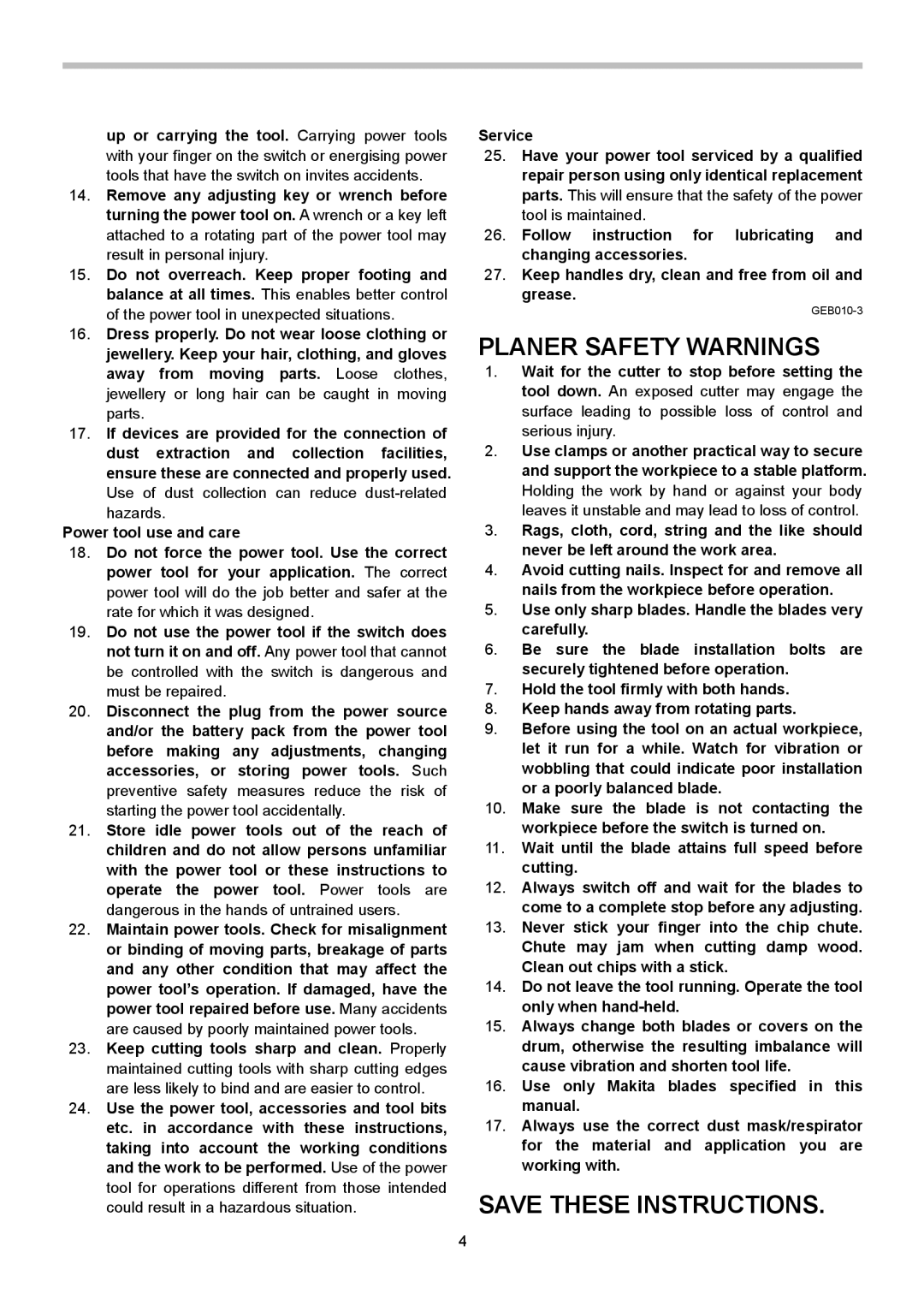up or carrying the tool. Carrying power tools with your finger on the switch or energising power tools that have the switch on invites accidents.
14.Remove any adjusting key or wrench before turning the power tool on. A wrench or a key left attached to a rotating part of the power tool may result in personal injury.
15.Do not overreach. Keep proper footing and balance at all times. This enables better control of the power tool in unexpected situations.
16.Dress properly. Do not wear loose clothing or jewellery. Keep your hair, clothing, and gloves away from moving parts. Loose clothes, jewellery or long hair can be caught in moving parts.
17.If devices are provided for the connection of dust extraction and collection facilities, ensure these are connected and properly used.
Use of dust collection can reduce
Power tool use and care
18.Do not force the power tool. Use the correct power tool for your application. The correct power tool will do the job better and safer at the rate for which it was designed.
19.Do not use the power tool if the switch does not turn it on and off. Any power tool that cannot be controlled with the switch is dangerous and must be repaired.
20.Disconnect the plug from the power source and/or the battery pack from the power tool before making any adjustments, changing accessories, or storing power tools. Such preventive safety measures reduce the risk of starting the power tool accidentally.
21.Store idle power tools out of the reach of children and do not allow persons unfamiliar with the power tool or these instructions to operate the power tool. Power tools are dangerous in the hands of untrained users.
22.Maintain power tools. Check for misalignment or binding of moving parts, breakage of parts and any other condition that may affect the power tool’s operation. If damaged, have the power tool repaired before use. Many accidents are caused by poorly maintained power tools.
23.Keep cutting tools sharp and clean. Properly maintained cutting tools with sharp cutting edges are less likely to bind and are easier to control.
24.Use the power tool, accessories and tool bits etc. in accordance with these instructions, taking into account the working conditions and the work to be performed. Use of the power tool for operations different from those intended could result in a hazardous situation.
Service
25.Have your power tool serviced by a qualified repair person using only identical replacement parts. This will ensure that the safety of the power tool is maintained.
26.Follow instruction for lubricating and changing accessories.
27.Keep handles dry, clean and free from oil and grease.
PLANER SAFETY WARNINGS
1.Wait for the cutter to stop before setting the tool down. An exposed cutter may engage the surface leading to possible loss of control and serious injury.
2.Use clamps or another practical way to secure and support the workpiece to a stable platform. Holding the work by hand or against your body leaves it unstable and may lead to loss of control.
3.Rags, cloth, cord, string and the like should never be left around the work area.
4.Avoid cutting nails. Inspect for and remove all nails from the workpiece before operation.
5.Use only sharp blades. Handle the blades very carefully.
6.Be sure the blade installation bolts are securely tightened before operation.
7.Hold the tool firmly with both hands.
8.Keep hands away from rotating parts.
9.Before using the tool on an actual workpiece, let it run for a while. Watch for vibration or wobbling that could indicate poor installation or a poorly balanced blade.
10.Make sure the blade is not contacting the workpiece before the switch is turned on.
11.Wait until the blade attains full speed before cutting.
12.Always switch off and wait for the blades to come to a complete stop before any adjusting.
13.Never stick your finger into the chip chute. Chute may jam when cutting damp wood. Clean out chips with a stick.
14.Do not leave the tool running. Operate the tool only when
15.Always change both blades or covers on the drum, otherwise the resulting imbalance will cause vibration and shorten tool life.
16.Use only Makita blades specified in this manual.
17.Always use the correct dust mask/respirator for the material and application you are working with.
SAVE THESE INSTRUCTIONS.
4
